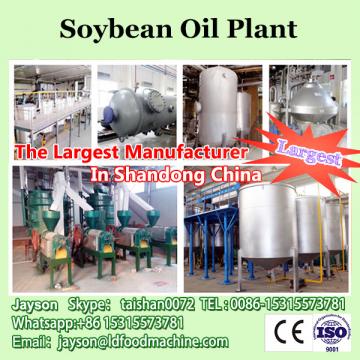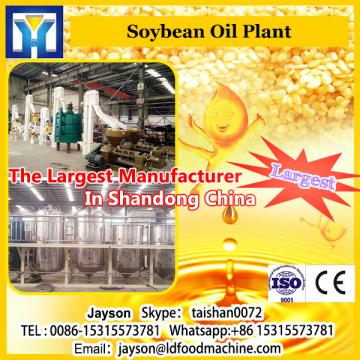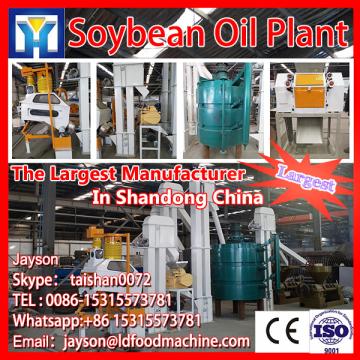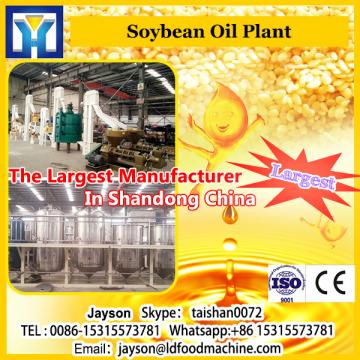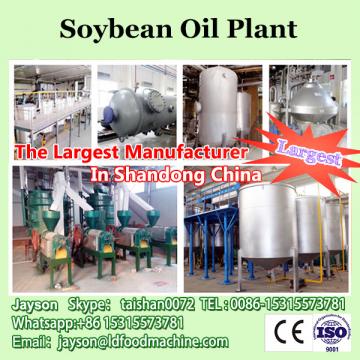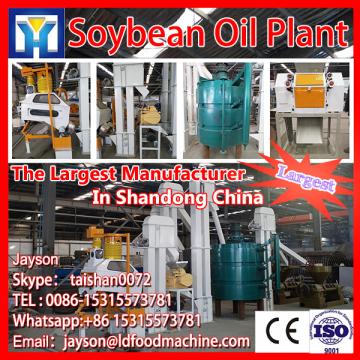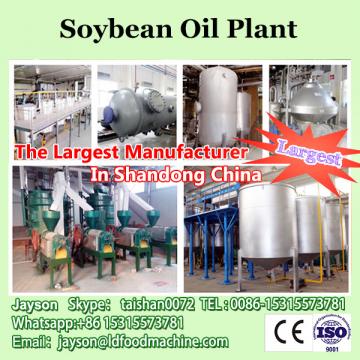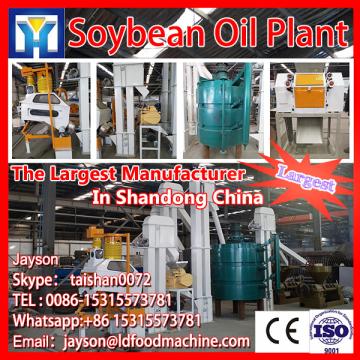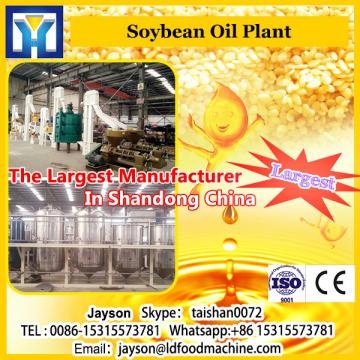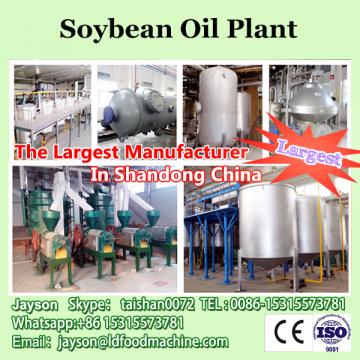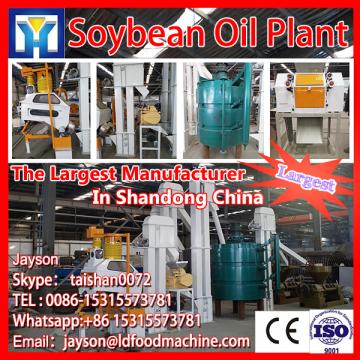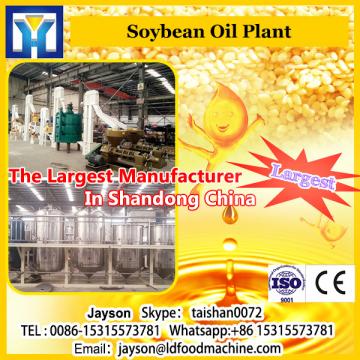
- Small Oil Pressing Machine - Leader Machinery
- Industrial automatic continuous fryer Soybean Oil Plant
- Address3rd Road, High-tech Zone, Jinan City, Shandong Province
- Factory Address3rd Road, High-tech Zone, Jinan City, Shandong Province
- Worktime9:00--18:00
- Phone(Working Time)086-0531-885125
- Phone(Nonworking Time)086-0531-881256
- Fax086-0531-885125
Soybean Oil Plant
Contact NowSoybean oil is generally treated by various methods such as pressing and leaching to obtain a fur oil having a large amount of impurities, and then refined to obtain an edible refined oil.
Soybean Oil machine process
Soybean oil cleaning → screening → wind selection → specific gravity method to remove stone → magnetic separation → shoulder mud error cleaning → dust removal → soybean moisture regulation → crushing → softening → rolling stock → soybean extrusion puffing → soybean oil leaching → mixed oil Treatment→mixing oil purification and preheating→mixed oil evaporation→mixed oil stripping→soybean crude oil (hair oil)→filtration→hydration degumming→alkali refining decolorization→decolorization→deodorization→product oil
The pressing method is divided into two types: ordinary pressing method and screw pressing method. Ordinary pressing is a method of pressurizing soybeans. This method has not been used much, especially in industrial large-scale production. The screw press method is to install a screw shaft in a cylinder of a horizontal device, and the pretreated soybeans enter the screw press; and the grease is extruded while advancing. This method can be continuously produced, but in the process of oil extraction, due to friction and heat, the protein changes to a large extent.
Leaching process oil is a solvent that dissolves oil and fat, and the oil in the preform is leached by the effects of wetting, molecular diffusion and convection diffusion. Then, the mixed oil composed of the solvent and the fat is separated, and the solvent is recovered to obtain a hair oil. The most common leaching solvents used in the actual production of China's oil-making industry are several aliphatic hydrocarbons such as hexane or light gasoline. Among them, light gasoline is the most widely used solvent, but the biggest disadvantage is that it is flammable and explosive, the composition is complex, and the boiling range is wide. Leaching method with oil yield up to 99%
Different oil processing plant
The processing technology of the press oil is the "physical pressing method", and the processing technology of the leaching oil is the "chemical leaching method". The production process of the physical pressing method requires the raw materials to be selected. After the oil is removed, the stone is crushed, steamed and extruded, and the oil is separated from the oil. The fried seeds are added during the pressing process and are pressed by the press. Made with high-tech natural filtration and purification technology. It maintains the original flavor of soybean, has a rich aroma, is rich in vitamin E, has a long shelf life, and has no additives, no solvent residue and soap content. It is a pure natural green food produced by a combination of modern technology and traditional technology. . The leaching method adopts an organic solvent extraction method, and the organic material such as n-ethane which is toxic to the human body is extracted by fully combining the oil material with an organic solvent such as “No. 6 light gasoline” (commonly known as “No. 6 solvent oil”). It is difficult to completely remove it. Only after refining to a very strict standard can it be safely consumed. Otherwise, it will easily cause harm to the human body; but in high-temperature refining, it will inevitably cause loss of nutrients of some vitamins. In China, except for part of soybean oil produced by the pressing process, most of the corn oil, soybean oil and cottonseed oil are processed by the “No. 6 light gasoline” leaching method because of the high oil yield of the leaching method.
Different nutrients
Pressed soybean oil has a complete color, aroma and taste, retaining the characteristics of various nutrients. The leaching oil is colorless, odorless, and most of the nutrients are destroyed after processing. The edible oil standard drafted by the National Grain Bureau has been implemented, eliminating the old standards used in China. The new standard stipulates that pressing soybean oil and leaching soybean oil should mark the words “squeezing” and “leaching” in the product label. With the advancement of society and the improvement of people's living standards, diet and nutrition and health have become the pursuit of people. The process of producing soybean oil is transparent, in order to let consumers understand the production process of soybean oil and give the right to know to consumers. Give the choice to the consumer.
Soybean Oil Plant raw material requirements are different
“Squeezing soybean oil” is pure physical pressing method, retaining the original flavor of soybeans, so the requirements for soybean raw materials are very strict, raw materials are required to be fresh, acid value and peroxide value are low, so the price is relatively high; Only pressing, the residual oil in the soybean cake is high, and the oil yield of the pressed oil is relatively low. Therefore, the price of pressed soybean oil is relatively high.
Soybean Oil Plant oil cleaning
Purpose and requirements: The oil will be mixed with impurities during harvesting, transportation and storage. Although the oil usually needs to be pre-cleared before storage, the oil in the initial stage will still contain a small amount of impurities, which cannot meet the requirements of oil production. Therefore, the oil will be further cleaned after entering the production workshop, and the impurity content will be reduced to the process. Within the scope of the requirements to ensure the effectiveness of the oil production process and product quality.
Soybean Oil Plant cleaning method:
1 screening:
The screening utilizes the difference in particle size between the oil and the impurities, and the impurities larger or smaller than the oil are removed through the mesh by the relative movement of the oil-containing material and the sieve surface. Screening equipment commonly used in oil plants includes vibrating screens, flat rotary screens, rotary screens, and the like. Most screening equipment has an important working component, the screen surface. The choice of mesh size and mesh shape is determined by the actual size of the oil seed particles.
2 wind selection:
According to the difference in specific gravity and aerodynamic properties of oilseeds and impurities, the method of separating impurities in oil by wind is called air separation. The air selection can be used to remove light impurities and dust in the oil, and can also be used to remove heavy impurities such as metals and stones, and can also be used for separation of kernels after oil shelling. Most of the air separation equipment selected by the oil plant is used in combination with the screening equipment, such as suction flat screen, vibration cleaning screen, plane rotary drying, etc., with a wind selection device. There are also special equipment for air separation and separation. For example, a wind sorter is a wind-selecting device that specifically removes heavy impurities from cottonseed.
3 gravity method to go to the stone:
The method is based on the specific gravity and suspension speed of oilseeds and stones, and the combination of inclined screen surfaces with certain motion characteristics and airflow through the screen surface achieves the purpose of grading stone removal. The grease processing plant usually uses a suction-type specific gravity stone removing machine, which is characterized by negative pressure inside the stone machine during work, which can effectively prevent dust from rising, and the output of the single machine is large, but the suction and dust removal system needs to be separately configured. The blower type grinder is equipped with a fan, which has a simple structure, but has poor working conditions and a small output, and is only used in a small grease processing factory.
4 magnetic selection:
Magnetic separation is a method of removing magnetic metal impurities from oil by magnetic force. The application of magnetic separation is to use the magnetic difference of various ores or materials to perform the selection process under the action of magnetic force and other forces. Generally used for magnetic separation equipment are permanent magnetic drum magnetic separator, cylindrical magnetic separator, rotary drum iron, and charged electromagnetic iron.
5 side by side mud cleaning:
A mud block whose shape and oil are similar or equal, and whose specific gravity is similar to oilseeds, is called a shoulder mud. The amount of shoulder mud in rapeseed, soybean and sesame is more. When the shoulder mud is cleaned, the mechanical properties of the mud block are different. First, the oilseed with the shoulder mud is milled or the side mud is crushed, that is, the mud is crushed, and then the mud is screened or air-selected. The equipment used for grinding mud mainly includes rubber roller grinding machine and vertical round sieve.
6 dust removal:
The dust contained in the oil not only affects the quality of the oil and concrete, but also flies during the cleaning and transportation of the oil. These flying dust pollute the air and affect the environmental sanitation of the workshop, so it must be removed. The method of dust removal is first to close the dust source, reduce the influence range of the dust, and then set the dust removal air net to collect the dusty air and remove the dust. Commonly used dust collectors in oil plants include centrifugal dust collectors and bag filters. Consider the cost and other factors here, using a centrifugal dust collector.
Soybean Moisture Regulation Editor
The oil moisture affects the physical properties such as oil elasticity, plasticity, mechanical strength, thermal conductivity and microstructure. The physical properties of the oil directly affect the effect of oil processing. The moisture of the oil also affects the activity of various enzymes in the oil, and the action of the enzyme can change the properties of certain components in the oil, thereby affecting the quality and yield of the products and by-products. If the humidity of the oil is too high, it is dried. Generally, convection drying and conduction drying are used. If the humidity of the oil is too small, it is necessary to humidify. Generally, it is mixed with saturated steam and water and sprayed onto the oil in the conveying, so that a better wetting effect can be obtained, and the time for uniformity of water is also short.
broken
Large grain soybeans must be broken prior to soy rolling. The purpose is to make the soybean have a certain particle size to meet the rolling conditions by crushing, and the surface area of the soybean after crushing is increased, which is favorable for the transfer of temperature and moisture during softening, and the softening effect is improved. It is required that the soybeans have a uniform particle size after crushing, no oil, no agglomeration, less powder, and the particle size meets the requirements. The broken size of the soybean is 4-6 petals, and the powder of the broken beans is controlled to pass no more than 10% through the 20 mesh/inch sieve. The maximum diagonal length of the pre-squeezed cake is 6~10mm. In order to meet the requirements for crushing, it is necessary to control the moisture content of the oil at the time of crushing. If the moisture content is too high, the oil is not easily broken and is easily crushed. Oil. It will also cause the crushing equipment to be unsuitable for food, the yield is reduced, etc.; the moisture content is too low, the powderiness of the crushed oil material is increased, and the oil-containing powder is easily adhered together to form a mass. In addition, the temperature of the oil will also be
The crushing effect has an effect. The powder of the hot oil seed is small, and the powder after the cold oil seed is broken is large. Generally, the soybean is suitable for crushing water of 10% to 15%. The method of crushing oil has several forms such as impact, shearing, extrusion and milling. Commonly used crushing equipments include a tooth roller crusher, a hammer crusher, and a disc type sheller. Here, the crushing of soybeans is selected as a roller crusher.
Crude Cooking Oil Refinery Machine Oil Softening
Softening is to improve the elastoplasticity of the oil by adjusting the moisture and temperature of the oil, so that it has the best conditions for rolling, reducing the powderiness and sticking phenomenon during rolling, and ensuring the quality of the blank. Softening is mainly used for oils with low oil content, low water content and high shell content, which have poor physical properties and hard texture. Soybeans have low oil content and poor plasticity, and are generally softened before rolling. The rolling stock temperature should be determined by the moisture content of the soybean. When the moisture content of soybean is 13% to 15%, the softening temperature is usually between 70 and 80 degrees, and the softening time is 15 to 30 minutes. Commonly used softening devices are layered softening pans and drum softening pans. Here, a drum type softening pot with a better softening effect is used.
Rolling
Rolling is the process of pressing the oil into a sheet shape by the action of a machine. The purpose of rolling is to destroy the cell tissue of the oil, increase the surface area of the oil, shorten the distance of the oil outflow, facilitate the extraction of oil, and also improve the evaporation effect. Rolling is the key to pretreatment and is related to the quality and quality of the oil. The key to the rolling stock is again the operation of the rolling mill. In order to ensure the quality of the billet, the moisture and temperature of the material before rolling are strictly controlled. It is preferable to set a softening box on the rolling mill to prevent excessive moisture and temperature loss after softening. Before driving, the working condition of the rolling mill should be inspected carefully. If the thickness of the blank at both ends is uneven, or the oil that has not been rolled is mixed into the billet, stop the inspection and adjust the rolling distance (the balance should be adjusted on both sides and avoid adjustment). Too tight). Check that the scraper is in close contact with the surface of the roll to prevent sticking. Pay attention to the uniformity of the flow to prevent no-load operation. Generally, the thinner the oil is rolled, the more the cell tissue is destroyed, and the better the oil extraction effect. The requirement for the rolling stock is that the blank is thin and uniform, the powder is small, and there is no oil leakage. Whether the oil is taken by the pressing method or the oil is taken by the leaching method, the thickness of the blank has a great influence on the oil yield. Effect of Bean Thickness on Pressing Oil Yield
Soybean oil content Oil yield 18.35 0.5 13.58 18.35 0.8 12.95 General soybean rolling thickness requirements of 0.3mm or less. The rolling equipment can be divided into two types: in-line rolling mill and flat row rolling mill. The in-line rolling mill has two kinds of three-roll rolling mills and five-roll rolling mills, and the flat row rolling mill has two types of single-roll rolling mills and double-roll rolling mills. Here, a flat-type single-pair rolling mill having a large production capacity is selected.
Extrusion
Oil extrusion is the process of converting crushed, rolled or whole oil into porous expanded pellets by means of extrusion equipment. Extrusion is a high temperature, short time process. Commonly used extruders are single-screw and twin-screw. The water content during extrusion can be divided into wet and dry extrusion. The extrusion pretreatment of the oil is mainly treated by a low-moisture wet single-screw extruder, that is, the oil is cleaned, rolled into an extruder, and heated, pressurized, glued, and decompressed, and puffed. forming. Generally speaking, in the extrusion process, the extrusion temperature can reach about 110 to 200 ° C, the residence time in the extruder is l to 3 min, and the short is only 5 to 105. After the oil is subjected to high temperature wet heat extrusion treatment, the following objectives can be achieved: (1) gelatinization of the starch and denaturation of the protein, and the cell structure can be quickly and completely destroyed due to swelling, and the oil is uniformly diffused and easily extracted. (2) It can passivate various enzymes, especially lipolytic enzymes, oxidases, etc., and the deactivation rate is over 95% after extrusion. (3) It can increase the oil yield, increase the output, and reduce the solvent loss. Oil extrusion and extrusion equipment: There are two main types of oil extrusion equipment, one is a puffing machine for low oily green bodies, the so-called closed wall extrusion extruder, and the other is for high oil content. The green extruder is a so-called slotted wall extrusion extruder.
Crude Cooking Oil Refinery Machine Oil Leaching
7.1 Basic principles and elements of oil production by leaching
The leaching method uses a solvent capable of dissolving oil and fat, and extracts the oil in the embryo by wet penetration, molecular diffusion and convection diffusion, and then separates the mixed oil composed of the solvent and the fat to recover the solvent to obtain the hair. The oil also recovers the solvent in the soybean meal to obtain a leaching mash. In this process, the basic elements are the solvent and the embryo and the leaching method and process parameters that determine the leaching effect.
1, the choice of solvent
The ideal leaching solvent should meet the following basic requirements:
1 can dissolve grease in any proportion at room temperature or low temperature;
2 The selectivity of the solvent is better, that is, the other components are not dissolved except for the fat.
3 Chemically stable, stable to light and water, chemically unchanged after heating, evaporation and cooling.
4 requires low boiling point of solvent, small specific heat and low latent heat of vaporization, easy to separate and recover from hydrazine and oil.
5 The solvent itself is non-toxic, neutral, no odor and no pollution.
6 Solvents do not chemically react with oils, hydrazine and equipment materials. The most common leaching solvents used in the actual production of China's oil-making industry are several aliphatic hydrocarbons such as industrial hexane or light gasoline. Among them, light gasoline is the most widely used solvent in China. It is a low-boiling fractionation product of petroleum raw materials, which meets the above basic requirements of solvents. However, the biggest disadvantage is that it is flammable and explosive, and there is a danger of explosion when the content in the air reaches 1.25 to 4.9%. At the same time, light gasoline has a complex composition and a wide boiling point range. In addition, acetone, methyl ethyl ketone, isopropanol, butane and some complex solvents can be used for grease leaching, and some have been tested.
2, the requirements of the embryo
Soybean raw materials are pretreated, so that the structure and properties of the embryos should meet the requirements of the leaching process, and a good leaching effect can be obtained.
1 The degree of cell destruction is as thorough as possible.
2 The embryo is thin and firm, and the powder is small. The leaching distance is short, and the contact area between the solvent and the preform is large, which is advantageous for improving the leaching efficiency. Soybean direct dip
